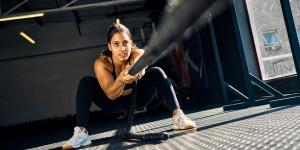What Muscles Do You Use When Cycling?


Cycling has many benefits for your health, such as cardiovascular, circulatory and respiratory. It also tones your legs and reduces cellulite. One hour of cycling burns about 500 calories and improves our aerobic capacity. While almost any exercise is beneficial to overall health, cycling is especially good for mental health. Cycling gets the blood pumping through the body faster, resulting in a rapid release of endorphins and other beneficial substances. But, do you know which muscles are used during cycling?
In the following oneHOWTO article, we go into detail about which muscles are used when cycling and what other important benefits cycling has for your health.
Muscles involved in cycling
Exercising on a bike creates constant motion. Depending on where you pedal, some muscles are used more or others are used more. Knowing exactly which muscles are being used will help you better plan your post-workout stretches to improve muscle efficiency, reduce the risk of injury, and increase physical performance during activity.
Glutes
Despite the common feeling that the glutes are limited during cycling because you are sitting on the saddle, they are one of the most used muscle groups. They exert about 30% of the force required when pedaling. The gluteal muscles, especially the gluteus maximus and gluteus medius, located in the buttocks, are responsible for the pressure at the top of the pedal stroke.
Quadriceps
It is a muscle of the lower body that consists of four parts that extend along the front of the thigh. Its function is to produce the movement of the knee and hip. When you pedal, its work is noticeable on the descents: When you push the pedal through with your foot, you feel a greater load on the quadriceps.
Calf muscles
They extend from the knee to the ankle, that is, they are a two-limbed muscle. The calf muscles are involved in the flexion of the legs and feet, so we can guess their importance in sports activities. When cycling, they are constantly used, both uphill and downhill.
Hamstrings
The hamstrings play an important role among the various parts of the body that are exercised on the bike. They are located in the lower body and extend between the back of the thigh, from the hip to below the knee. This muscle is involved in the extension of the leg. You will notice activity in it when you lift the pedals. They also act during knee flexion.
Muscles involved in stationary cycling
The exercise bike trains the muscles mentioned above. That is, the muscles of the lower body such as the glutes, quads, calves, and hamstrings. In addition, it also trains some muscles of the upper body.
Exercising the upper body muscles on the exercise bike often goes rather unnoticed because during the exercise, people do not feel that their abdominal muscles, for example, are being exercised. In fact, some people frequently wonder why they still have a belly after months of training and cycling.
While it's true that the upper body muscles on an exercise bike are less worked than the lower body muscles, that does not mean they are not being worked. During this exercise, the abs, back, biceps, and triceps are also engaged.

Muscles involved in elliptical cycling
On the elliptical trainer, the glutes, quads, calves, and hamstrings are also trained, but in a different way, as the posture is different. In this case, the intervention in the muscles of the upper body is much more evident than on the stationary bike. The most important muscles that are engaged are the following:
Pectoral muscles
These muscles connect the chest to the bones that correspond to the upper part of the shoulder and arm. The arm performs a continuous parallel movement during the exercise.
Back muscles
Among the best known are the latissimus dorsi, quadratus lumborum and trapezius. With the elliptical bike, you will train these muscles and strengthen your spine. Try not to slouch during the activity and pay attention to your posture to avoid injuries and contractures.
Abdominal muscles
They support the upper trunk and their function is crucial for protecting the internal organs. When exercising on an elliptical trainer, keep your back straight and make sure your posture is correct. The better trained your abdominal muscles are, the less you will have to exert yourself during the activity.
Biceps and triceps
These are the main muscles that make up the forearm. When cycling on an elliptical trainer, you work both muscles by holding the handlebars and pushing off to perform the movements. The speed of execution is a determining factor to train the biceps and triceps with more or less intensity.
If you want to read similar articles to What Muscles Do You Use When Cycling?, we recommend you visit our Fitness category.





